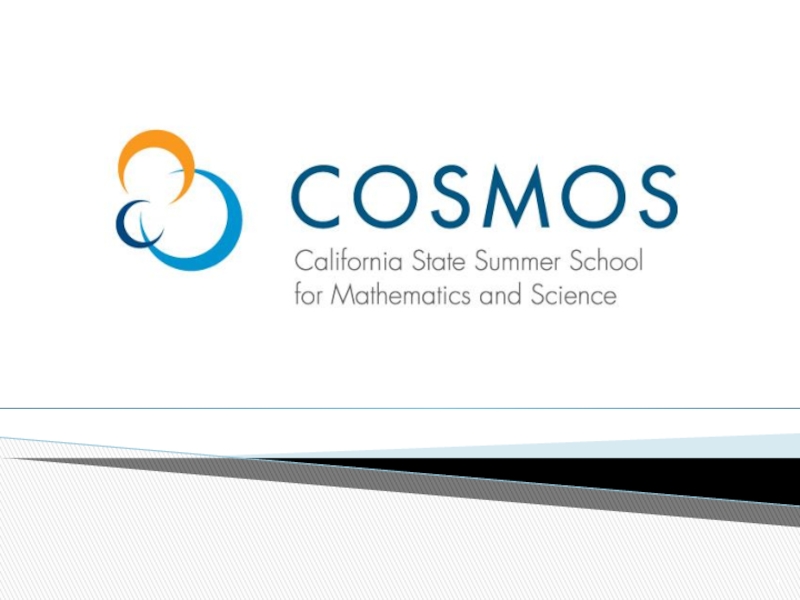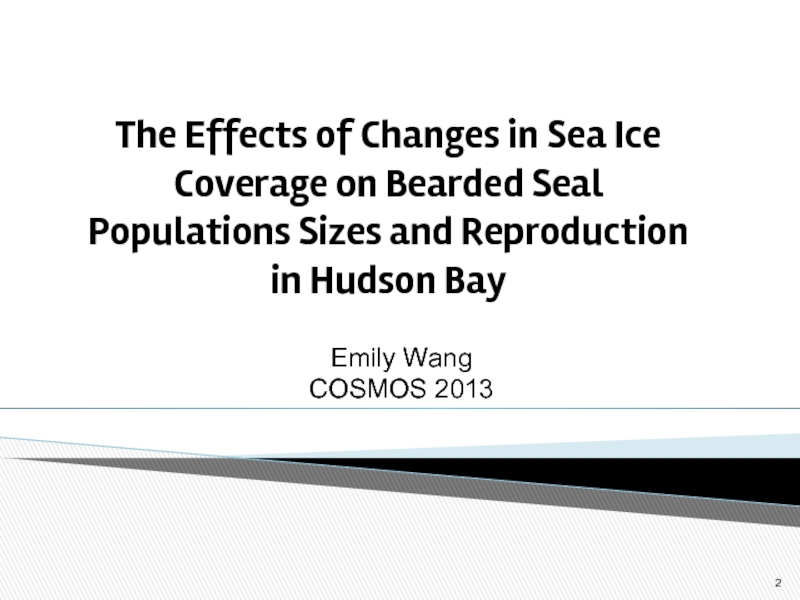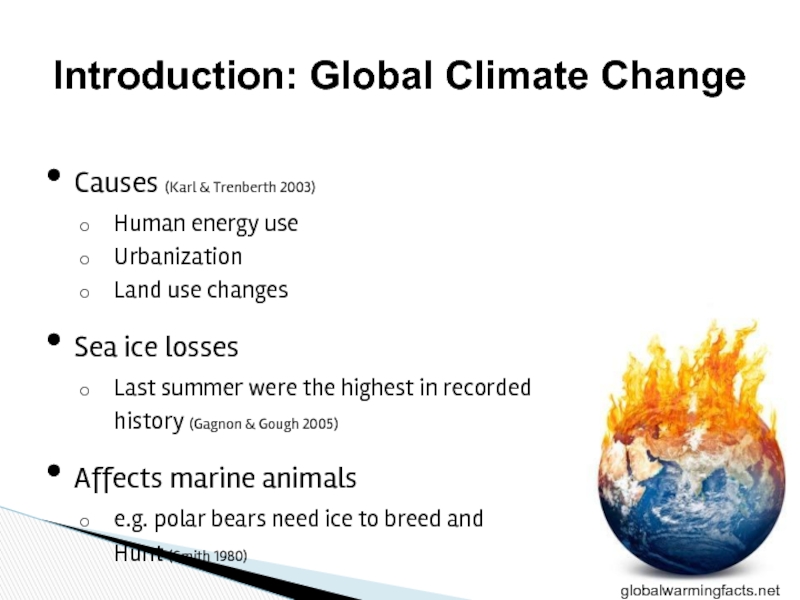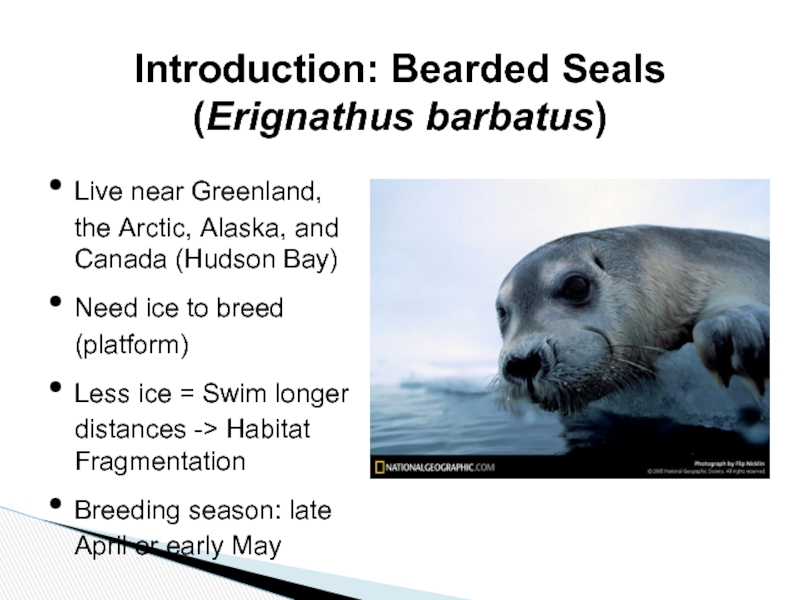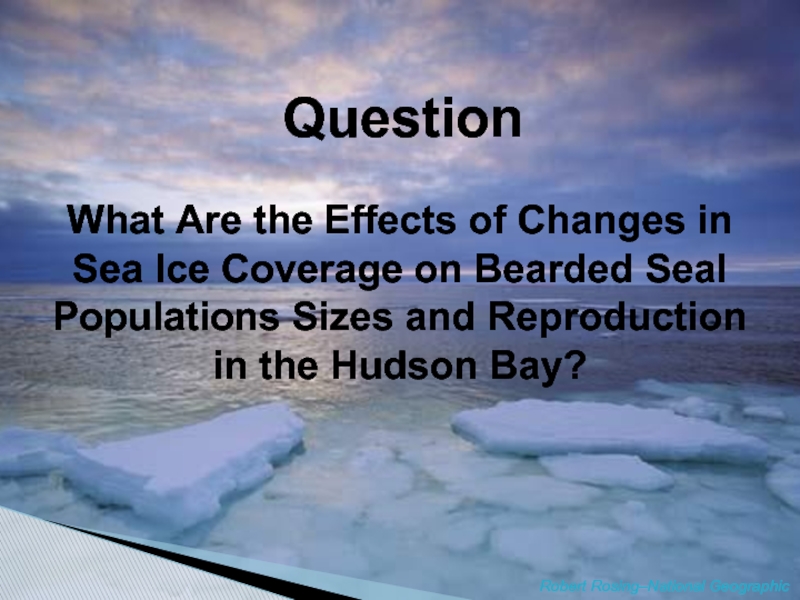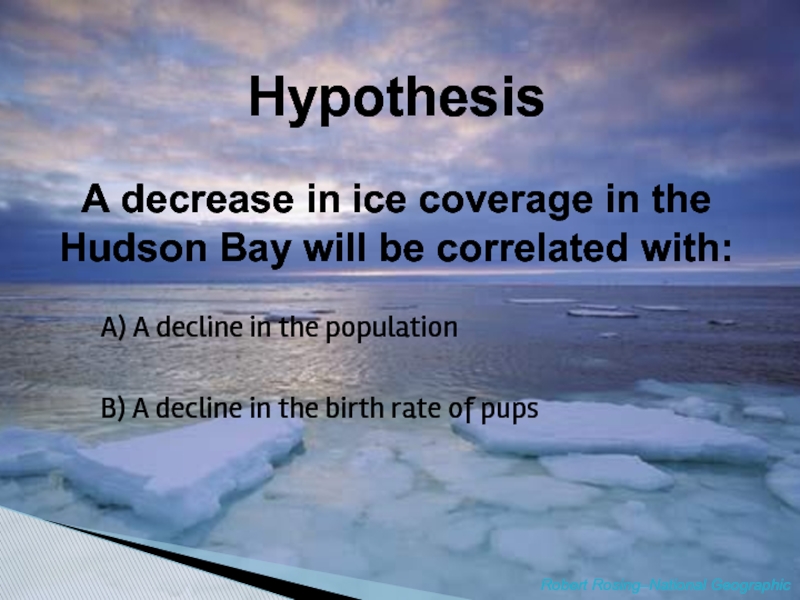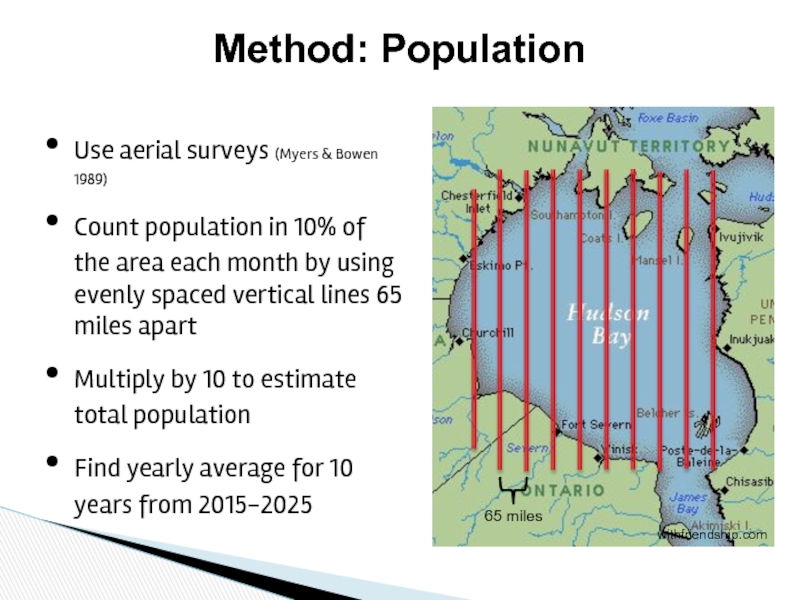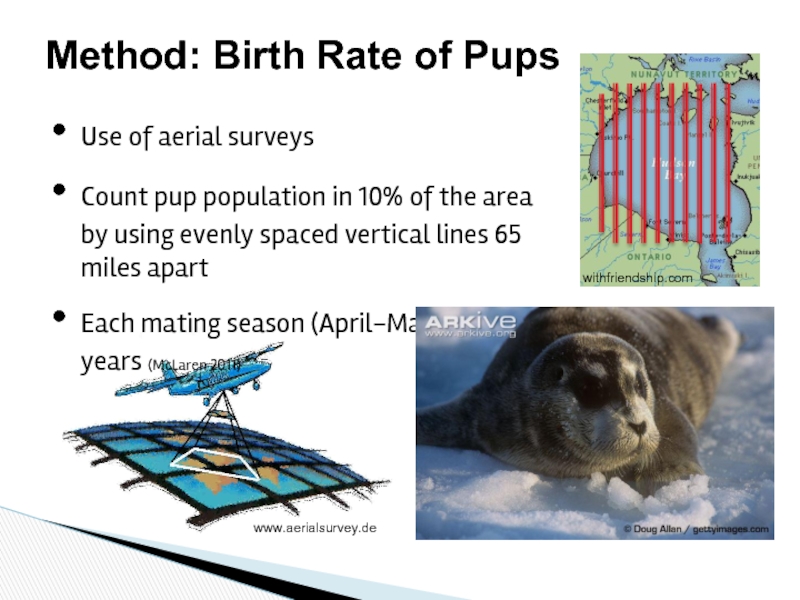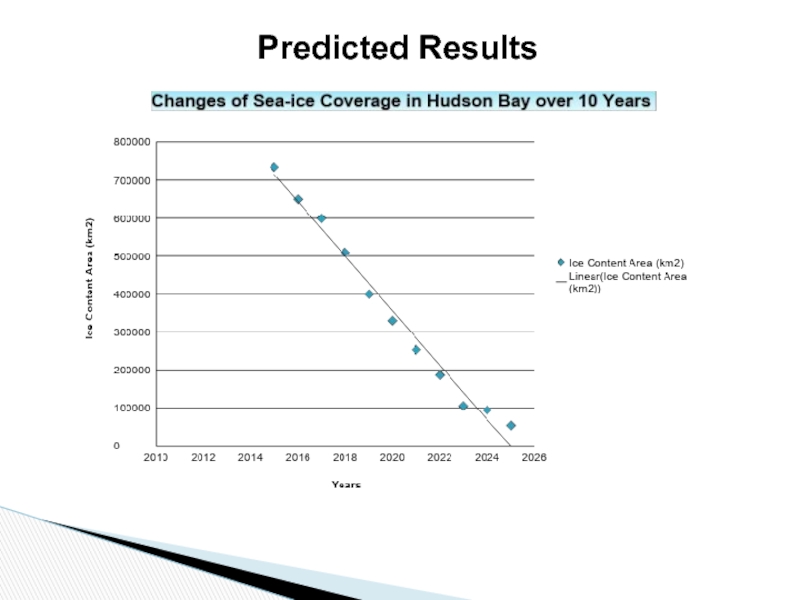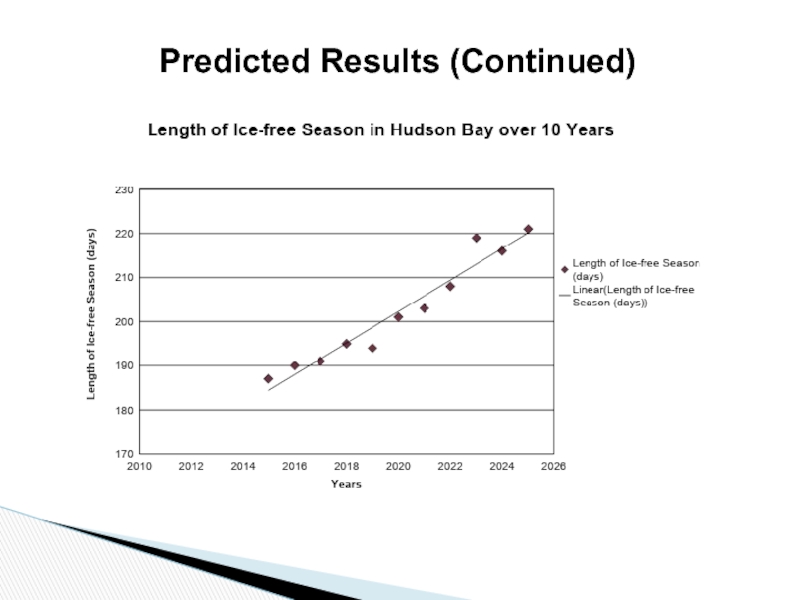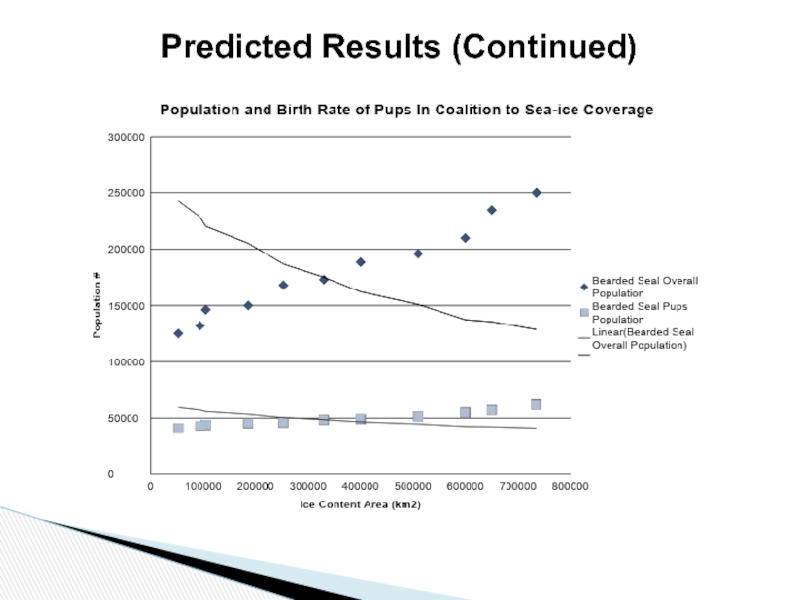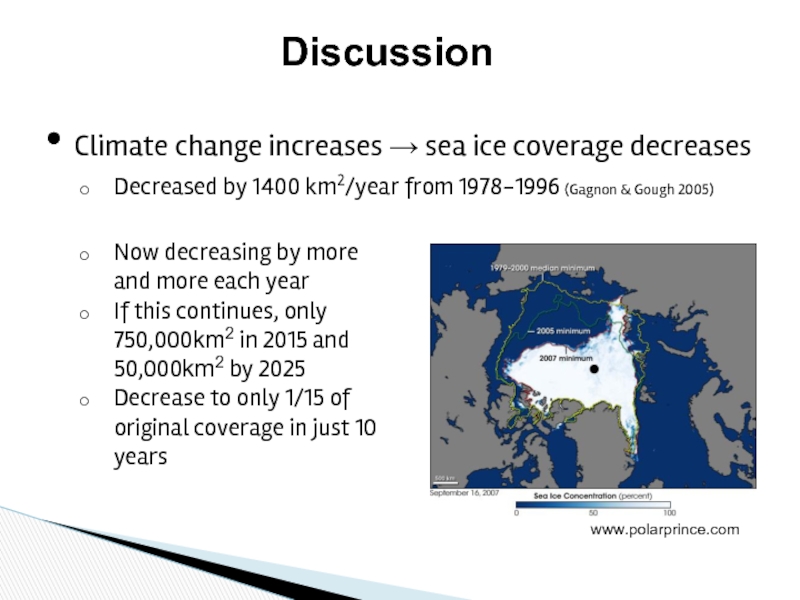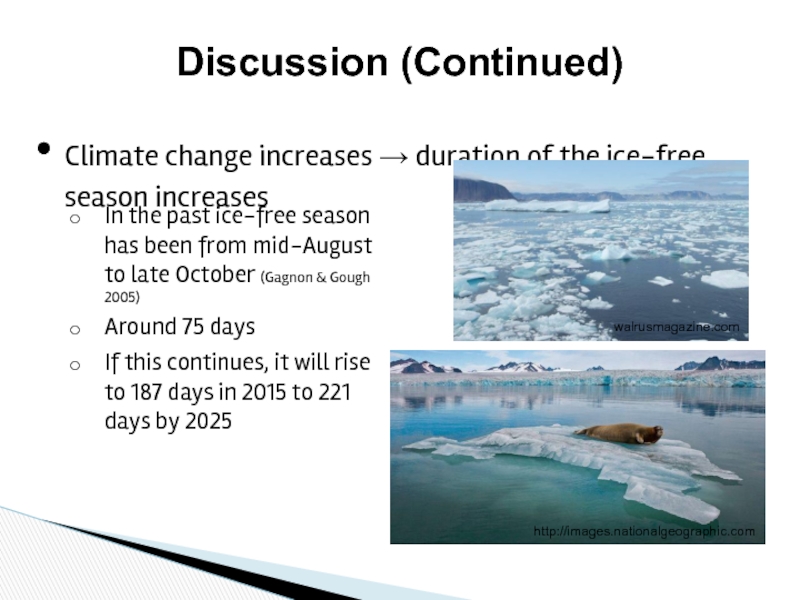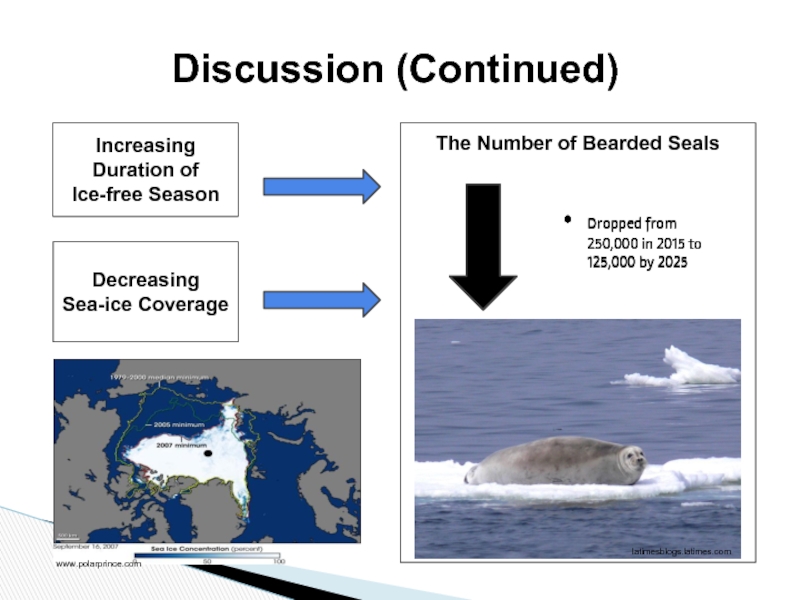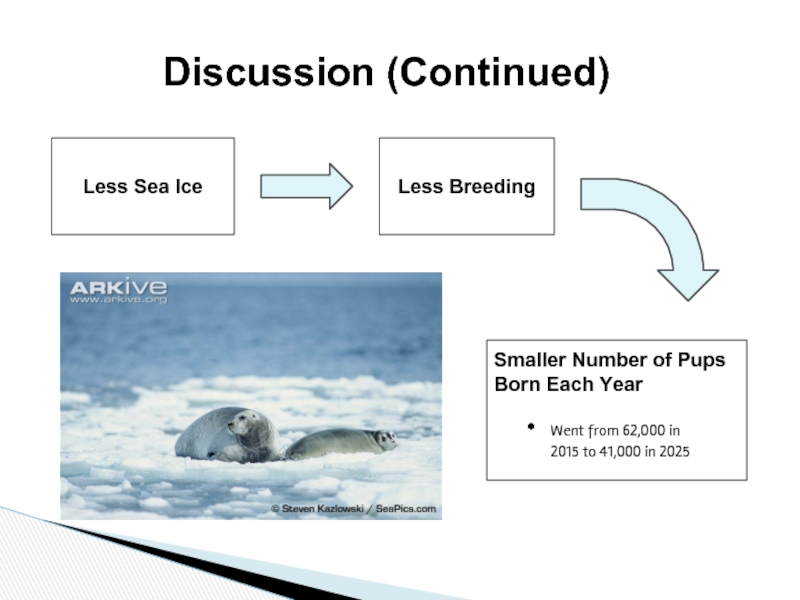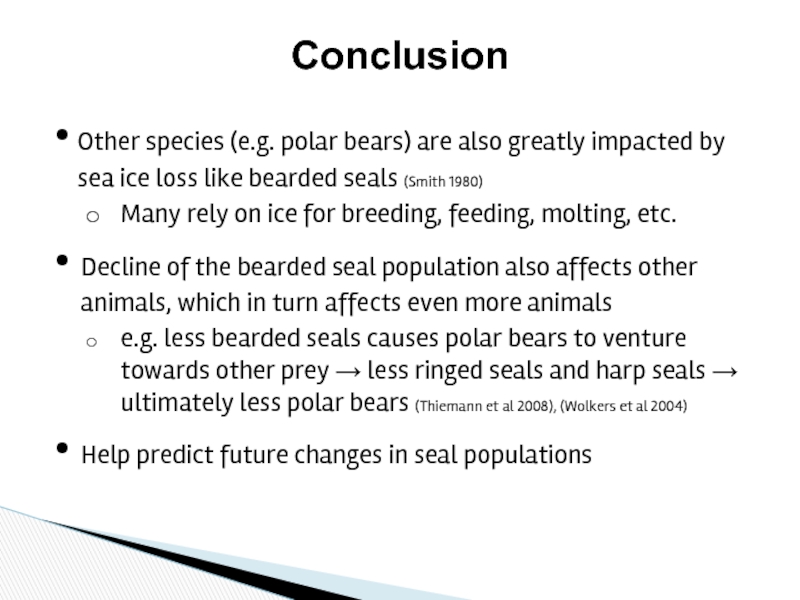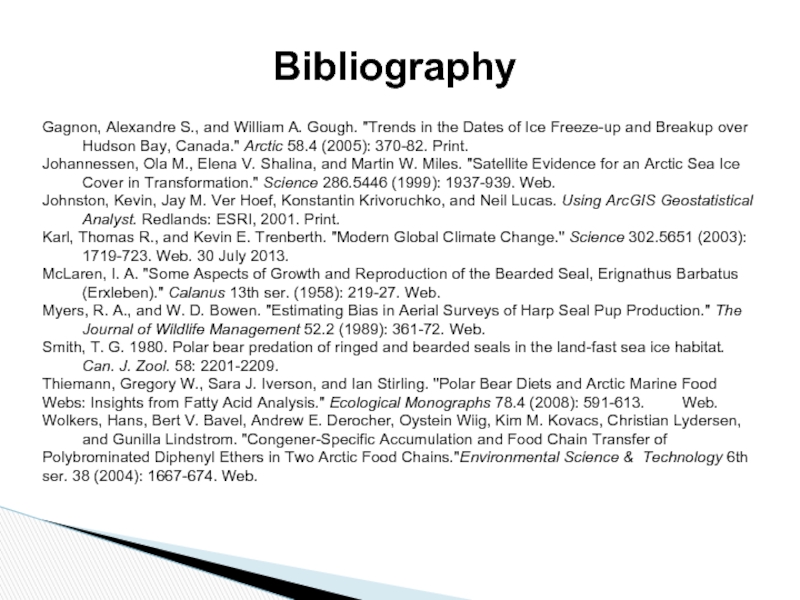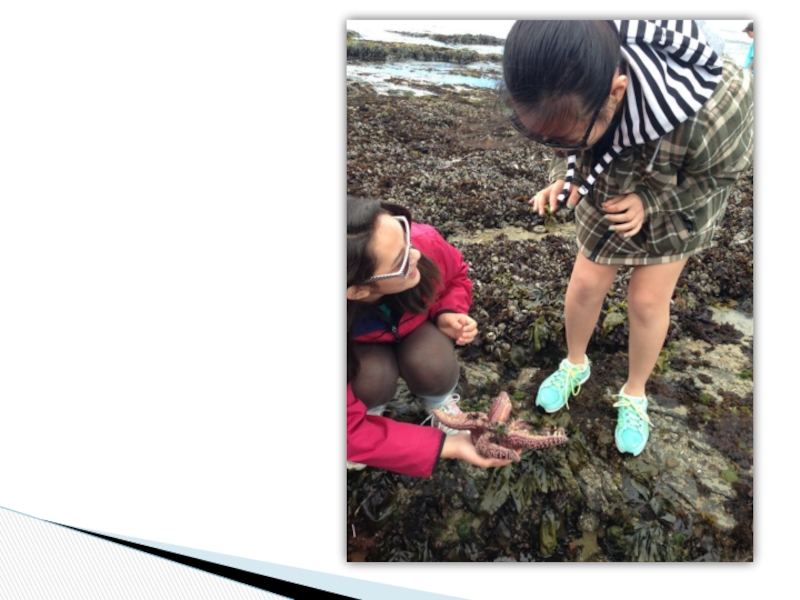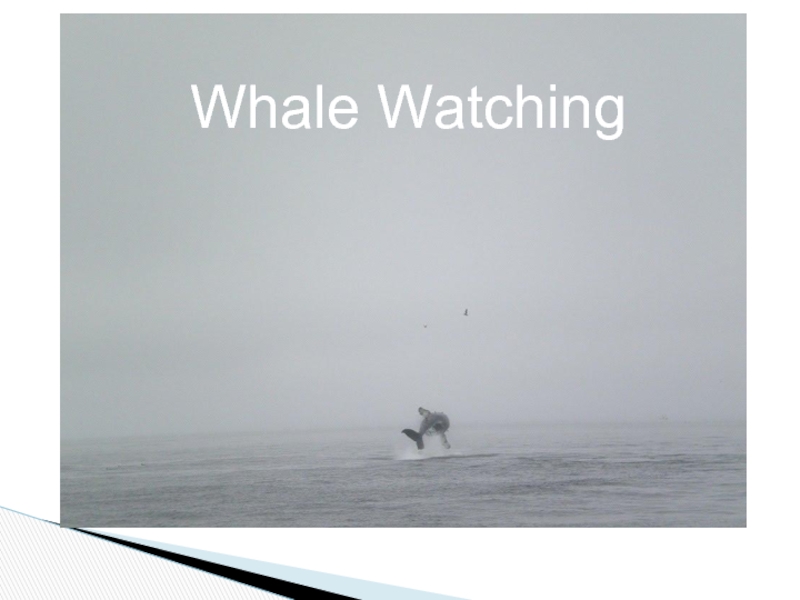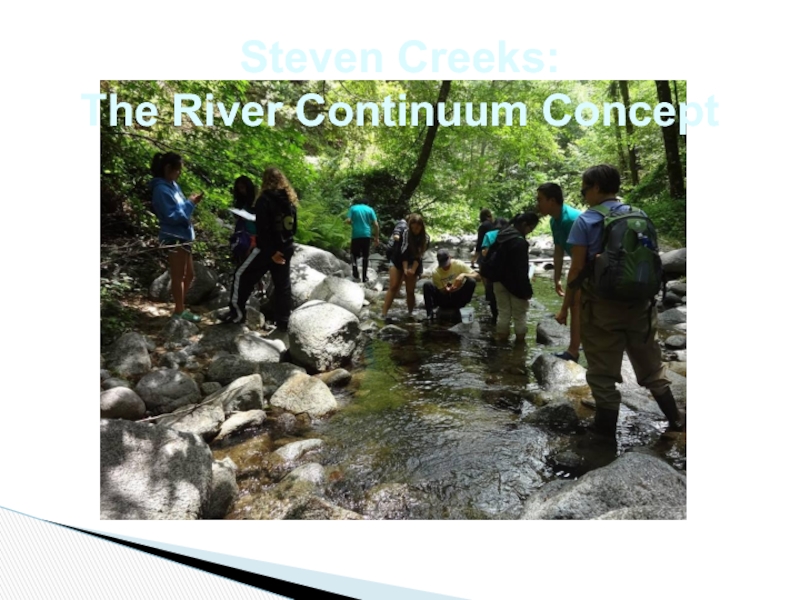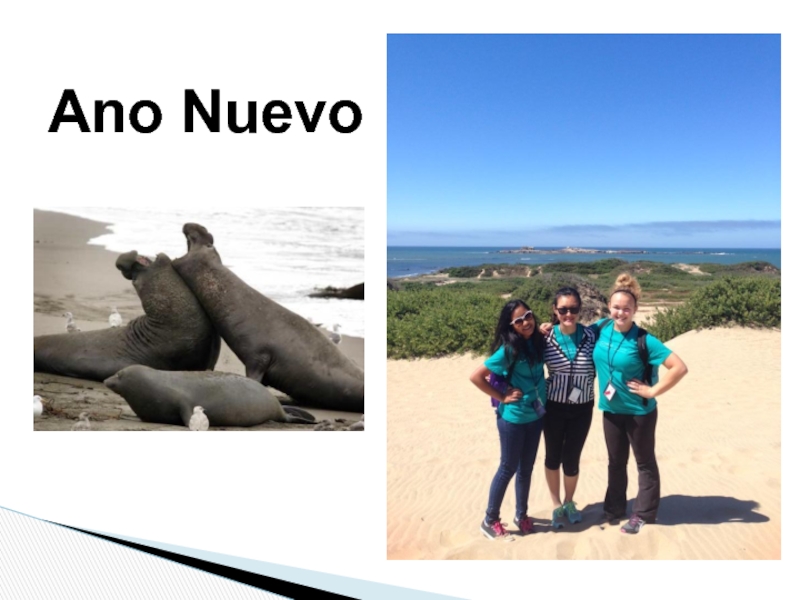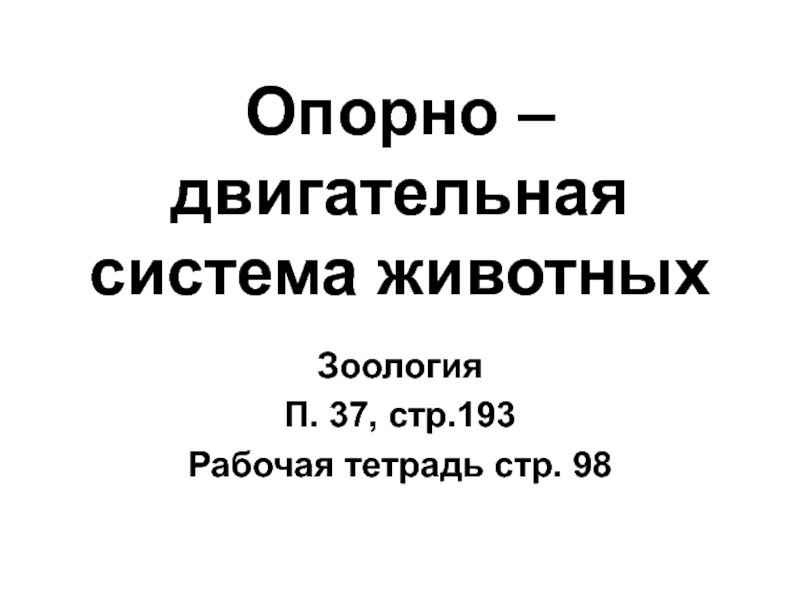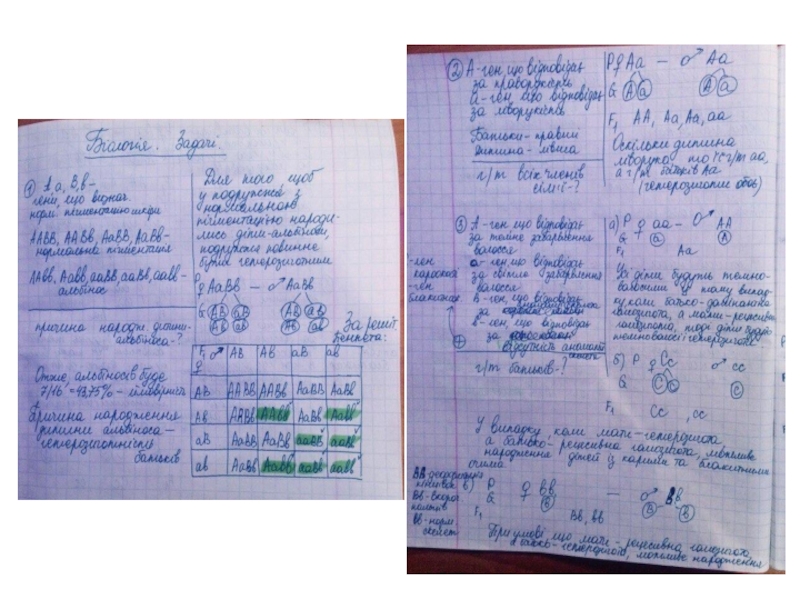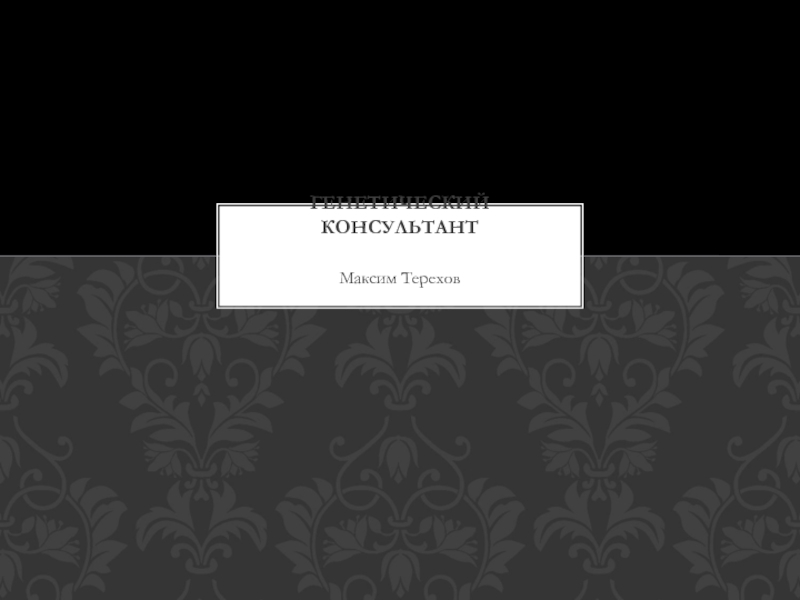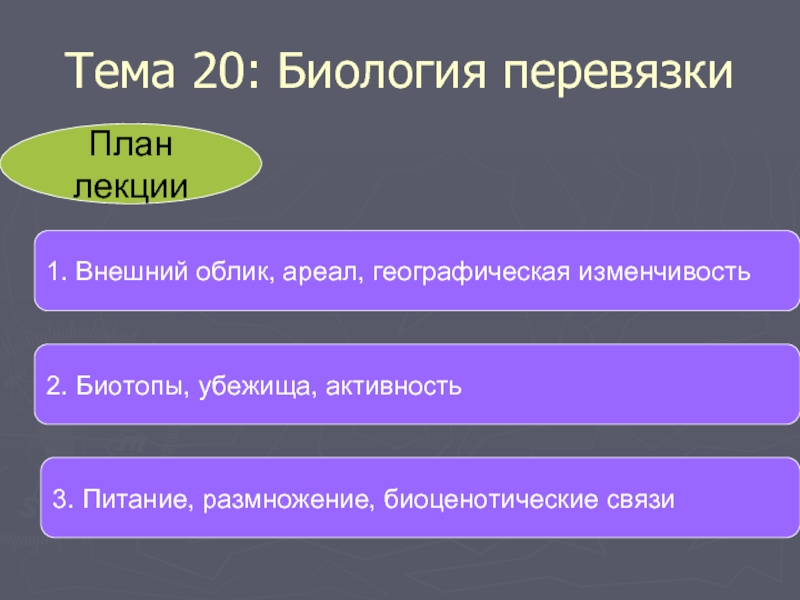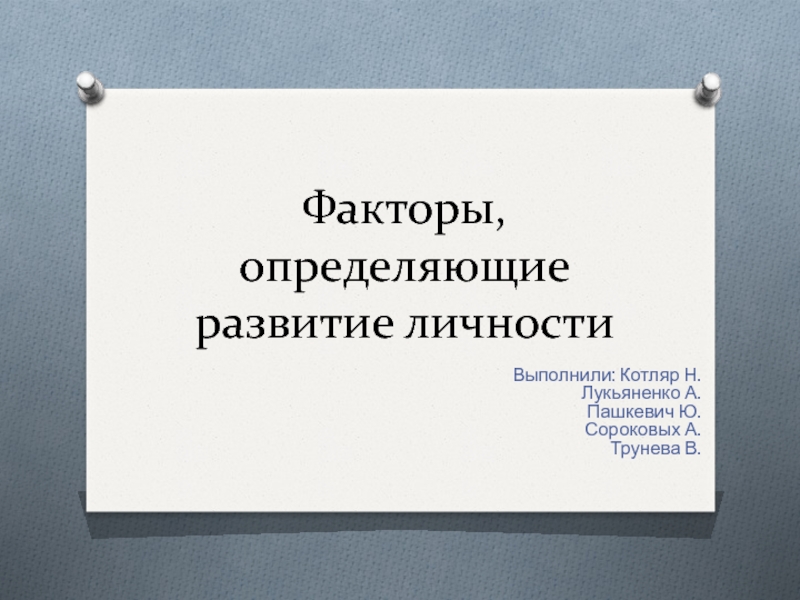Emily Wang
COSMOS 2013
- Главная
- Разное
- Дизайн
- Бизнес и предпринимательство
- Аналитика
- Образование
- Развлечения
- Красота и здоровье
- Финансы
- Государство
- Путешествия
- Спорт
- Недвижимость
- Армия
- Графика
- Культурология
- Еда и кулинария
- Лингвистика
- Английский язык
- Астрономия
- Алгебра
- Биология
- География
- Детские презентации
- Информатика
- История
- Литература
- Маркетинг
- Математика
- Медицина
- Менеджмент
- Музыка
- МХК
- Немецкий язык
- ОБЖ
- Обществознание
- Окружающий мир
- Педагогика
- Русский язык
- Технология
- Физика
- Философия
- Химия
- Шаблоны, картинки для презентаций
- Экология
- Экономика
- Юриспруденция
1 презентация
Содержание
- 2. The Effects of Changes in Sea Ice
- 3. Introduction: Global Climate Change Causes (Karl
- 4. Live near Greenland, the Arctic,
- 5. What Are the Effects of Changes in
- 6. A decrease in ice coverage in the
- 7. Method: Sea Ice Coverage Use Special Sensor
- 8. Method: Population Use aerial surveys (Myers &
- 9. Method: Birth Rate of Pups Use of
- 10. Predicted Results
- 11. Predicted Results (Continued)
- 12. Predicted Results (Continued)
- 13. Discussion Climate change increases → sea ice
- 14. Discussion (Continued) Climate change increases → duration
- 15. Discussion (Continued) Dropped from 250,000 in 2015
- 16. Discussion (Continued) Went from 62,000 in 2015
- 17. Conclusion Other species (e.g. polar bears) are
- 18. Bibliography Gagnon, Alexandre S., and William A.
- 19. Acknowledgements I would like to thank Dr.
- 20. Intertidal Ecology
- 21. Whale Watching
- 22. Steven Creeks: The River Continuum Concept
- 23. Ano Nuevo
- 24. WORK HARD PLAY HARD
Слайд 2The Effects of Changes in Sea Ice Coverage on Bearded Seal
Слайд 3
Introduction: Global Climate Change
Causes (Karl & Trenberth 2003)
Human energy use
Urbanization
Land use
Sea ice losses
Last summer were the highest in recorded
history (Gagnon & Gough 2005)
Affects marine animals
e.g. polar bears need ice to breed and
Hunt (Smith 1980)
globalwarmingfacts.net
Слайд 4
Live near Greenland, the Arctic, Alaska, and Canada (Hudson Bay)
Need ice
Less ice = Swim longer distances -> Habitat Fragmentation
Breeding season: late April or early May
Introduction: Bearded Seals (Erignathus barbatus)
Слайд 5What Are the Effects of Changes in Sea Ice Coverage on
Question
Robert Rosing–National Geographic
Слайд 6A decrease in ice coverage in the Hudson Bay will be
A) A decline in the population
B) A decline in the birth rate of pups
Hypothesis
Robert Rosing–National Geographic
Слайд 7Method: Sea Ice Coverage
Use Special Sensor Microwave/Imagers satellites F8, F11, and
Use ArcGIS to analyze data (Johnston et al 2001)
Measure volume of sea ice coverage every month
Find yearly average each year from 2015 to 2025
Observe duration of the ice-free season each year from 2015 to 2025
www.noaanews.noaa.gov
Слайд 8Method: Population
Use aerial surveys (Myers & Bowen 1989)
Count population in 10%
Multiply by 10 to estimate total population
Find yearly average for 10 years from 2015-2025
65 miles
withfriendship.com
Слайд 9Method: Birth Rate of Pups
Use of aerial surveys
Count pup population in
Each mating season (April-May) for 10 years (McLaren 2011)
www.aerialsurvey.de
withfriendship.com
Слайд 13Discussion
Climate change increases → sea ice coverage decreases
Decreased by 1400 km2/year
Now decreasing by more and more each year
If this continues, only 750,000km2 in 2015 and 50,000km2 by 2025
Decrease to only 1/15 of original coverage in just 10 years
www.polarprince.com
Слайд 14Discussion (Continued)
Climate change increases → duration of the ice-free season increases
In
Around 75 days
If this continues, it will rise to 187 days in 2015 to 221 days by 2025
walrusmagazine.com
http://images.nationalgeographic.com
Слайд 15Discussion (Continued)
Dropped from 250,000 in 2015 to 125,000 by 2025
Decreasing Sea-ice
Increasing Duration of Ice-free Season
www.polarprince.com
latimesblogs.latimes.com
Dropped from 250,000 in 2015 to 125,000 by 2025
The Number of Bearded Seals
latimesblogs.latimes.com
Слайд 16Discussion (Continued)
Went from 62,000 in 2015 to 41,000 in 2025
Less Sea
Less Breeding
Smaller Number of Pups Born Each Year
Слайд 17Conclusion
Other species (e.g. polar bears) are also greatly impacted by sea
Many rely on ice for breeding, feeding, molting, etc.
Decline of the bearded seal population also affects other animals, which in turn affects even more animals
e.g. less bearded seals causes polar bears to venture towards other prey → less ringed seals and harp seals → ultimately less polar bears (Thiemann et al 2008), (Wolkers et al 2004)
Help predict future changes in seal populations
Слайд 18Bibliography
Gagnon, Alexandre S., and William A. Gough. "Trends in the Dates
Johannessen, Ola M., Elena V. Shalina, and Martin W. Miles. "Satellite Evidence for an Arctic Sea Ice Cover in Transformation." Science 286.5446 (1999): 1937-939. Web.
Johnston, Kevin, Jay M. Ver Hoef, Konstantin Krivoruchko, and Neil Lucas. Using ArcGIS Geostatistical Analyst. Redlands: ESRI, 2001. Print.
Karl, Thomas R., and Kevin E. Trenberth. "Modern Global Climate Change." Science 302.5651 (2003): 1719-723. Web. 30 July 2013.
McLaren, I. A. "Some Aspects of Growth and Reproduction of the Bearded Seal, Erignathus Barbatus (Erxleben)." Calanus 13th ser. (1958): 219-27. Web.
Myers, R. A., and W. D. Bowen. "Estimating Bias in Aerial Surveys of Harp Seal Pup Production." The Journal of Wildlife Management 52.2 (1989): 361-72. Web.
Smith, T. G. 1980. Polar bear predation of ringed and bearded seals in the land-fast sea ice habitat. Can. J. Zool. 58: 2201-2209.
Thiemann, Gregory W., Sara J. Iverson, and Ian Stirling. "Polar Bear Diets and Arctic Marine Food Webs: Insights from Fatty Acid Analysis." Ecological Monographs 78.4 (2008): 591-613. Web.
Wolkers, Hans, Bert V. Bavel, Andrew E. Derocher, Oystein Wiig, Kim M. Kovacs, Christian Lydersen, and Gunilla Lindstrom. "Congener-Specific Accumulation and Food Chain Transfer of Polybrominated Diphenyl Ethers in Two Arctic Food Chains."Environmental Science & Technology 6th ser. 38 (2004): 1667-674. Web.
Слайд 19Acknowledgements
I would like to thank Dr. Shawn Noren, Patrick Robinson, Walter,
http://www.hi-wallpapers.com
